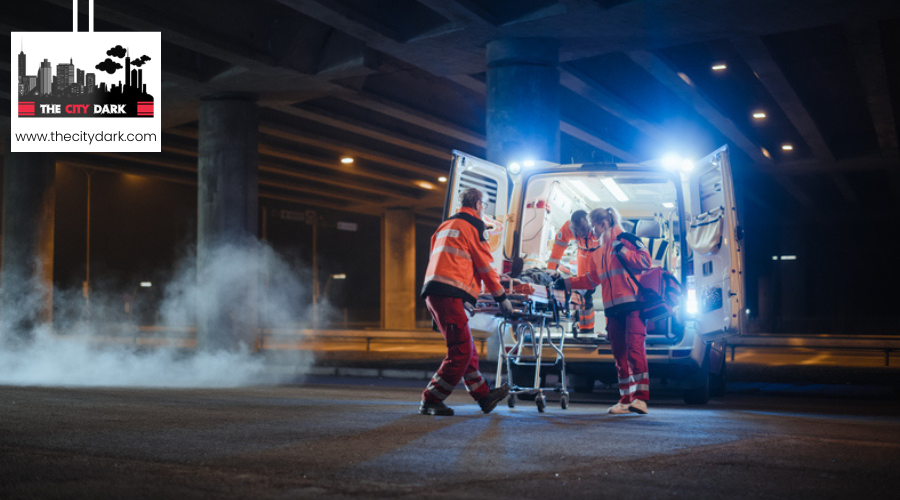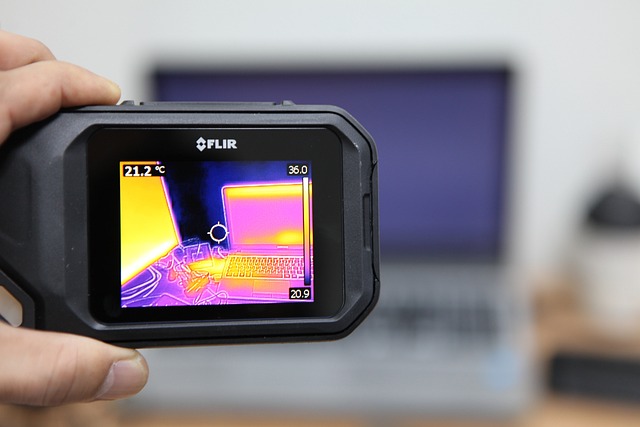EMS professionals are enhancing their work in dim light with advanced night vision. This technology allows them to see in darkness, making low light brighter and using infrared to see better. It helps them find people quickly and navigate safely, delivering fast, precise care. They are training to improve their decision-making in the dark. With ongoing advancements, emergency responses will continue to evolve. This is a new era in nighttime patient care.
Key Takeaways
- EMS teams wear night vision goggles for clear sight in the dark, speeding up and refining patient care.
- Night vision helps EMS navigate and reach those in need in the dark or secluded spots swiftly.
- Learning to use night vision sharpens EMS alertness and choices, bettering care at night.
- Keeping night vision gear in top shape ensures quick, safe emergency action.
- Night vision now includes heat sensing and added reality, helping with quick, smart choices in low light.
Understanding Night Vision Technology
Night vision technology boosts EMS professionals’ sight in dim light. It helps navigate difficult areas by making ambient light brighter and using infrared beams. This skill lets you see clearly in tough spots, ensuring quick, precise care without daylight. The tech relies on tubes that enhance slight light, giving you a better view. This is crucial, as it sharpens your ability to judge situations and act accurately in emergencies.
Also, infrared beams in night vision tools are key. In almost dark places, these beams let you move and check patients in darkness or where it’s hard to see. Night vision widens your view in such cases, making sure you’re not guessing in patient care. You make choices based on a clear view of the place and patient. This tech is vital for effective rescue missions and better care at night.
Night Vision in EMS Operations
In EMS operations, professionals now depend on night vision technology to see clearly when light is poor. This ensures they can look after patients quickly and more correctly. Night vision goggles have become essential if you work under these tough conditions. They don’t just make seeing easier but also greatly boost the safety and work of helping patients at night.
Here’s how night vision goggles change things:
- See Better: You find patients fast in dark or far-off places. This is key for quick help.
- Move Safely: It’s easier and safer to move across hard land and around obstacles. This means you can get to those needing urgent care without waiting.
- Know More: With clearer sight, you understand the situation better. This leads to smarter choices in how to help and treat patients when it’s dark.
- Beat the Dark: Night vision tools let you work well even when it’s barely light, making sure you can always care for patients.
Training for Night Vision Use
To ensure EMS professionals use night vision technology well, focused training is crucial. You’re entering a world where every detail counts, and the skills you learn are vital for saving lives in the dark. This training isn’t just about mastering a gadget; it’s about boosting your alertness, enhancing your navigation, and making sure you can offer the best care in darkness.
Like police officers, you’ll come to rely on your gear and your training to make quick decisions. But it’s more than just getting over the initial learning hurdle. Continuous training and skill checks keep you sharp, ready for whatever the night may bring.
Here’s a brief overview of your training path:
| Aspect | Focus Area |
|---|---|
| Alertness | Better perception and decision-making |
| Navigation | Safe movement in dark, unknown places |
| Patient Care | Adjusting medical care for nighttime |
| Gear Use | Using, maintaining, fixing |
| Constant Sharpness | Staying skilled with ongoing updates |
These elements are streamlined but crucial for ensuring EMS professionals are prepared for nighttime operations, highlighting the importance of simplicity, directness, and continuous improvement in their training.
Equipment Maintenance and Upgrades
To ensure your night vision equipment is always battle-ready, stick to regular check-ups. Adding high-tech features to your gear isn’t merely for clearer views; it’s crucial for better service under the cover of darkness. Recall, diligent maintenance and timely upgrades significantly boost your low-light performance.
Routine Inspection Protocols
Ensuring night vision gear is dependable, EMS experts rigorously inspect for maintenance and updates. In the U.S., this high standard is crucial for top-notch patient care in dim light. The inspection process usually includes:
- Check Battery Life: Keep devices charged and ready.
- Ensure Lens Clarity: Clear vision is vital.
- Test Functionality: Make sure everything works as it should.
- Look for Upgrades: Seek out better technology.
Following these steps keeps night vision equipment in top shape, improving outcomes during night emergencies.
Advanced Technology Integration
By regularly updating and caring for their night vision gear, EMS professionals boost their efficiency in dim settings. This commitment to gear care lessens the chance of breakdowns when needed the most. With every update, the night vision systems progress, offering clearer views and better visibility. This isn’t just about seeing; it’s about seeing with unmatched clarity, even in tough environments. Additionally, the use of wireless communication systems improves coordination and communication, ensuring seamless patient care. Investing in your night vision equipment’s upkeep and enhancements leads to better patient care. You’re not just maintaining your equipment; you’re ensuring the best outcomes for those you help.
Case Studies: Success Stories
Emergency Medical Services (EMS) teams have transformed patient care and rescue operations through night vision technology. These tools enable them to conquer the challenges of darkness, ensuring timely help is available everywhere and at all times. Below are some remarkable ways night vision has revolutionized EMS work:
- Search and Rescue: Amidst the night, EMS professionals have pinpointed and saved injured hikers in secluded, dark locales. Seeing clearly in total darkness has been crucial for navigating dense woods and steep landscapes.
- Urban Emergency Response: In cityscapes, night vision technology has allowed EMS crews to quickly find and aid patients under dim conditions. This edge has noticeably sped up response times and enhanced patient recovery.
- Accident Scene Management: Victims of nighttime or poorly lit car crashes receive prompt and efficient aid from EMS teams equipped with night vision, enabling quicker medical response.
- Critical Care in Dim Light: In situations with scarce lighting, night vision supports EMS in handling urgent care, significantly improving patient welfare and security.
Future of Night Vision in EMS
As night vision technology for EMS evolves rapidly, it brings new capabilities like thermal imaging and augmented reality, redefining emergency responses in dim conditions. The future of night vision isn’t just about seeing in the dark; it’s about understanding and interacting with the environment in novel ways.
| Feature | Impact on EMS |
|---|---|
| Thermal Imaging | Quickly identifies patients in difficult conditions. |
| Augmented Reality | Offers real-time data overlay, improving immediate decision-making. |
| Night Vision Drones | Changes search and rescue operations in dim or dangerous environments. |
For instance, integrating drones opens up new rapid response possibilities. Imagine night vision drones scanning a disaster zone, sending live thermal images to responders. This allows them to find and help patients needing urgent care, even in total darkness. With advancements like predictive analytics and AI, these systems will not only hasten response times but also ensure more accurate care, saving more lives. The future of night vision in EMS is promising, heralding a new era of improved patient care in low-light situations.
Frequently Asked Questions
Why Is Night Vision Important?
Night vision is crucial as it makes the dark visible, ensuring safety during movement or search. It aids in quicker, precise decisions and actions when light is scarce.
How Does IR Night Vision Work?
IR night vision turns scant light, including infrared, into clear pictures. It lets you see when it’s nearly dark, helping you move and spot things in dim light.
Do Night Vision Goggles Emit Light?
No, night vision goggles amplify light, not emit it. This ensures invisibility in darkness, enhancing safety. They revolutionize visibility without betraying presence.
What Is the Use of IR Rays for the Operation of Night Vision Goggles?
Infrared rays are key for night vision goggles, letting you see in darkness by boosting surrounding infrared light. This tech changes unseen heat to seen images, improving your night moves and tasks.
Conclusion
In summary, night vision technology is transforming EMS work, giving clearer sight in dim light, thus improving patient care. EMS teams, through thorough training and careful upkeep of gear, are using this tech to its fullest. Their success stories highlight its effect. With ongoing advances, the role of night vision in EMS is set to grow, improving emergency responses around the clock.


